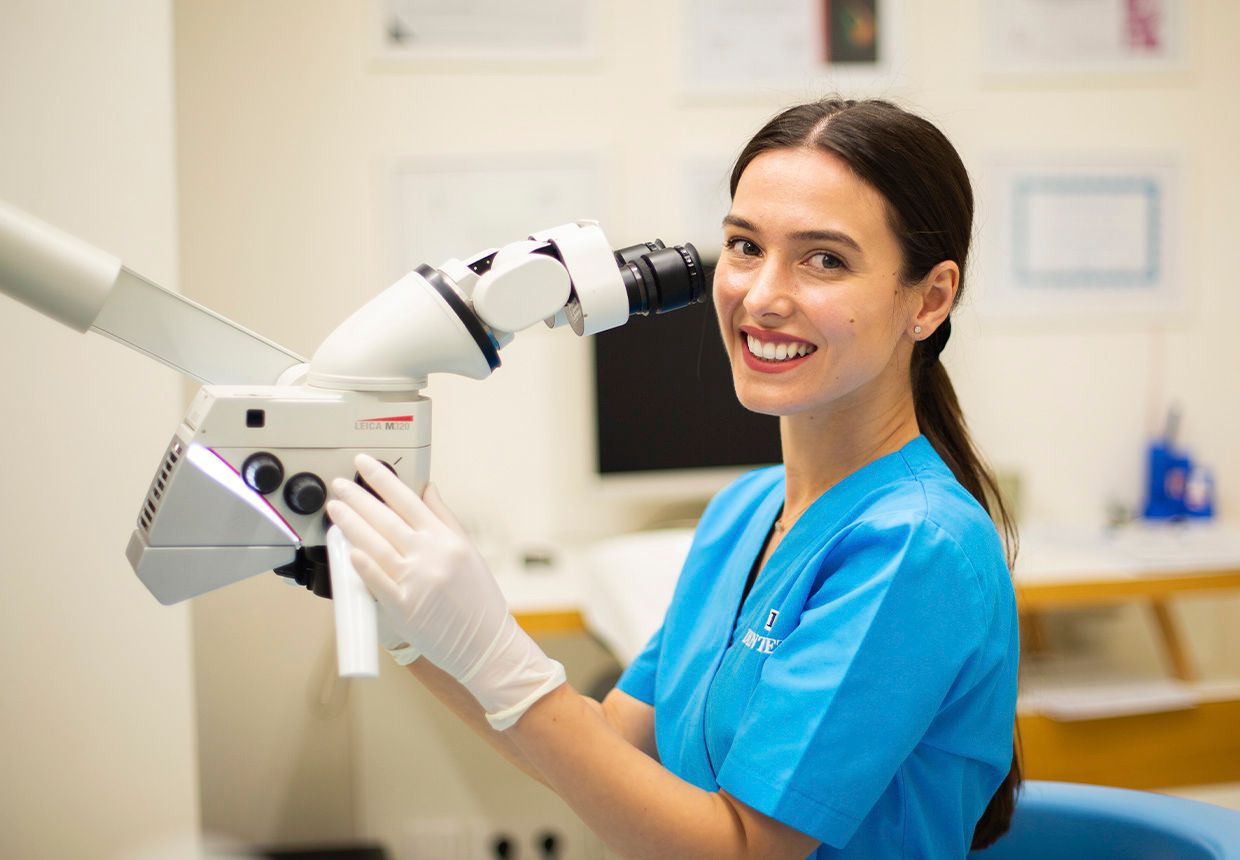
Endodontic Microscopes Zeiss or Leica
What is a dental microscope?
Many important elements of your oral cavity are microscopic in size. Special instruments are required for dentists to work with these elements. Since 1998, the dental microscope has become a key instrument in endodontics, and over the past 20 years, it has also been adopted by other dental specializations such as periodontics and surgery. This dental microscope is designed to provide detailed visualization during patient treatments.

Advantages of using the dental microscope
The dental microscope offers visual precision up to 400 times greater than the naked eye and 100 times greater than traditional loupes. The magnification improves the precision of treatmens and prevents damage to adjacent teeth and tissues during various surgical interventions.
In restorative dentistry, using a dental microscope enhances visibility in diagnosing, preparing, creating, and finishing dental work. Dental microscopes have built-in high-intensity lights that provide excellent visibility in areas that are hard to access with the naked eye.
Many dental lesions, such as some types of cracks, are visible only with significant magnification, at least 16 times. While many dentists limit themselves to using low-magnification loupes or none at all during examinations, dentists who work without a dental microscope are more likely to miss small areas of decay.
A dental microscope is an invaluable resource for an endodontist. Since endodontic (root canal) treatment occurs in a very small area, the procedure requires precision to navigate through complex roots and canals. Missed dental canals often mean untreated infections, which can lead to the need for repeated endodontic procedures.
At the DENT ESTET clinics, we use the Zeiss and Leica dental microscopes.
The dental microscope is used for:
Locating hidden dental canals that have been obstructed by calcifications and reduced in size.
Removing materials such as old filling materials.
Removing obstructions from dental canals.
Preparing access to avoid unnecessary tissue destruction.
Repairing perforations.
Locating cracks and fractures that are not visible to the naked eye.
Facilitating all aspects of endodontic surgery.
Improved photographic documentation.
Progress in dental microscope technology
The integration or attachment of a video camera to the dental microscope allows dentists to involve patients in their treatment more than ever. This significantly improves patient awareness, as their dental condition can be illustrated live. A clear, magnified image is worth more than a thousand words.
In the last three years, the use of dental microscopes has doubled. Dentists are constantly learning about dental microscope technology as it evolves rapidly. Since the 1990s, training in the use of dental microscopes has become an important component of endodontists' education. The use of dental microscopes is now universally taught to graduates in accredited endodontic specialty programs.


